- Home
- Larry Niven
Destroyer of Worlds Page 18
Destroyer of Worlds Read online
Page 18
“With Don Quixote’s instruments, we have inferred a great deal about the beings that Thssthfok calls the Drar. Technology falls off very quickly with distance from the city where we found him. We have assessed alternative development paths and done the simulations. The results are clear. Within fifty New Terra years, probably fewer, Thssthfok’s servants can build him ramscoops.”
Something in that warning rang false. Sigmund’s gut told him Ol’t’ro was holding back, making a point without telling the whole truth. They, it, whatever pronoun applied, could advance the Drar—and the Gw’oth themselves—even faster.
Gw’oth progress, like the existence of Ol’t’ro, could await another day. They should live long enough to worry.
Ol’t’ro’s warning had set Baedeker to burrowing into his mane, and launched Eric and Kirsten into intense whispers. Sigmund stopped them all with a stern look. Almost, the puzzle pieces had fallen into place. He had to think this through.
Pakhome was sterilized, its history over. Thssthfok surely thought those safe topics, and Sigmund a fool to be distracted by them. But in describing lost lands, and clan rivalries, and vanished institutions like the Library—anything but the weapons and tactics in which Sigmund professed interest, certain Thssthfok would divulge nothing useful about them—the prisoner had conveyed something more precious. Psychological and sociological insight.
Thssthfok had lost his family and any hope of recovering them. Still he ate. Everything Sigmund knew about protectors said that Thssthfok had rededicated his life to serving all Pak. Like Phssthpok in an earlier age, Thssthfok had found his Cause.
Now, thanks to Ol’t’ro, Sigmund knew that purpose.
Thssthfok would raise a great host. He would command a rearguard fleet to protect all Pak. He would smash any technological civilization missed by the Pak fleets, and smite anew any world recovering too quickly in their wake.
Decision time, Sigmund thought. He would not allow Thssthfok to raise a battle fleet.
That left two choices. They could kill Thssthfok—to strand him anywhere but where they found him meant only a slow and lingering death—or they could keep him aboard this ship.
Only there was no they. This was Sigmund’s mission. His ship. His responsibility.
He would kill to protect New Terra—if killing was necessary. It wasn’t.
So: They would return to the planet of the flying squirrels and grab a supply of tree-of-life root. They would head, with Thssthfok, to the Fleet of Worlds.
Sigmund made a final mental note. While on the ground to collect tree-of-life root, one of the crew would paint—from the outside, where Thssthfok could not scratch—the porthole in the cargo-hold hatch. An uncovered view into hyperspace might drive Thssthfok insane.
Sigmund permitted himself a moment of hope. Perhaps the sight of a live Pak protector would awaken—even in the Hindmost—the need for bravery.
THE LAST STRAW
29
Thssthfok’s first escape attempt failed almost instantly. Hallway sensors spotted him and a sudden jump in gravity turned his limbs too heavy to move. Two armed and armored humans appeared at the end of the hall. Under the sights of their weapons, barely able to wriggle as gravity eased just slightly, Thssthfok surrendered his jury-rigged hatch-lock controller and crept back to his cell.
It had gone much as he had expected.
The brief glimpse of the corridor had been necessary reconnaissance. One quick look had shown Thssthfok the location of hallway sensors and suggested ways that they, like the passive data feeds from his cell, might be accessed, bypassed, or compromised. And he had forced his jailors to reveal how they responded to a breach, and how quickly.
This escape would be real.
After the first escape, of course, the humans had searched his cell. They found what Thssthfok allowed them to find: a hoard of material scraps and a sacrificial instrument from his repair kit.
Everything important remained hidden. His cache looked like any other surface in any of the empty storage units. The humans had poked and probed randomly, even in obviously empty spaces. By blind luck, they might have found his hiding place. That was a risk he had had to take, and the odds had favored him.
They had not found his cache.
Thssthfok was prone on the deck between rows of empty storage units, where his captors were accustomed to seeing him retreat for sleep. He had not picked this spot randomly—it put him below the line of sight of the cell’s sensors. He reached through the small softened area on a bottom shelf. His structural modulator lay hidden between that shelf and the floor.
Ironically, primitive materials had held him when properly designed material would not. Twing was a flawless substance, but human materials were rife with cracks, voids, and impurities. He had had to rebuild the modulator to accommodate so many imperfections.
The ship’s hull was a curious exception. To his improvised instruments, the curved wall scanned as defect-free as twing—but unlike twing, this material resisted softening. A spot of hull absorbed without effect all the power he had dared apply. The ship itself powered his modulator, with power drawn wirelessly from the humans’ own magnetically coupled power transmitters. Any higher setting on the modulator risked drawing his captors’ attention.
But for the ever-present sounds of air circulating and engines humming, the ship remained quiet. It was time.
Thssthfok modulated a small patch of the deck to transparency. He studied the room below: a table, chairs, an oddly shaped bench, and exercise equipment. No crew. He softened a large area, reached into the room below, grasped the top of an exercise apparatus, and pulled himself through. With a pop, surface tension re-formed the ceiling behind him. He climbed onto the table, reached back into his cell, and retrieved the modulator, leaving the cell floor (from his new perspective, the ceiling) permeable. He might have to make a quick retreat.
As he did. He had only bypassed half this deck’s sensor feeds—from now on, they would always show empty corridors—when footsteps approached. A three-legged gait!
Thssthfok scrambled onto the table. He reached through the viscous ceiling, gripped a shelf, and, carefully staying beneath the sensors’ line of sight, lifted himself into his cell. Resuming a prone position, he pressed an eye against the still-transparent spot on the deck.
Moments later, a two-headed, three-legged something cantered into the room that Thssthfok had just vacated.
30
Nessus, looking dapper, stepped across the quarter mile of void that separated his ship from Don Quixote—
And with that impression, Baedeker finally had to admit the depths of his despair.
Nessus famously considered mane coiffure a pointless ostentation. His mane was earnestly combed straight and worn with only a few jewels. His sash was utilitarian: a way to wear pockets, entirely without adornment.
Dapper? Only by contrast.
For so long, Baedeker had struggled to care whether he bathed or untangled his mane. Too many things—the Gw’oth, the Pak, hyperspace, the absence of other Citizens—had taken their toll. He straightened out of the slouch become habitual and warbled a two-throated salutation. “Welcome aboard, Nessus.” They brushed heads in greeting.
“Thank you.” Nessus seemed surprised to find Baedeker on a New Terran vessel. Or perhaps the sociable greeting was what startled Nessus. “I see you have become a scout, Baedeker.”
The herd defined sanity, and yet scouts separated themselves from the herd. It mattered not that scouts acted on behalf of all, for the safety of all. Scouts sought risks, and that proved them mad. Scouts were (in an English word Baedeker had learned from Sigmund) mavericks. And so the statement was an insult.
Sung by the most experienced of Hearth’s few surviving scouts, the notes were praise.
“It feels good truly to speak,” Baedeker said. “English is not very satisfying.”
“Hello, Nessus,” Jeeves sang over the intercom. (The contrapuntal melodies blended precisely, the tone
s pitch-perfect to the third harmonic, one cycle of vibrato indistinguishable from the next. It was without rubato, utterly mechanical, and Nessus flashed a sympathetic look.) “Nessus, Baedeker, the others wait in the relax room. Sigmund asks that you join them when you are ready.”
Past differences with Nessus had somehow receded. It was more than the company of another Citizen after so much time among aliens. If anyone among the herd could appreciate the newfound dangers, it would be Nessus. And Nessus had the friendship of the Hindmost.
So where to begin? Baedeker had struggled with that question for days.
“Do you understand me?” Nessus switched to a little-used dialect.
“More or less,” Baedeker answered in the same way. “If Jeeves does, I cannot say.”
The stepping disc that had received Nessus was set in the corridor outside the bridge. Behind Nessus, beyond the open hatch, through the main view port, glittered the Fleet of Worlds. Four planets, blue and white and brown, ringed by necklaces of artificial suns: the nature preserves. And one planet, sunless, ablaze with the lights of its world-spanning city, more beautiful than all the rest. Hearth.
All at risk.
“Come with me,” Baedeker said to Nessus. “Sigmund will explain everything to you. First, though, there are things you must see for yourself.”
WITH A LUMP IN HIS THROAT, Sigmund prepared to leave Don Quixote.
Ol’t’ro and Jeeves had already said their good-byes. Voices over the intercom: There was not a lot of emotional content to either. And Baedeker would be joining Sigmund. But as for Eric and Kirsten . . .
Side by side, they stood looking at Sigmund. The three of them had been through a lot in the past eleven months. Sharing the cramped confines of Don Quixote was the least of it. It wasn’t obvious who moved first, but suddenly Sigmund and Kirsten were hugging. He gave her a final squeeze, let go, and gave Eric a hug, too. That was the male, backslapping kind of clinch, but equally heartfelt.
“Take care, you guys,” Sigmund told them.
Baedeker and Nessus waited nearby, ill at ease. Nessus’ arrival had bucked up Baedeker, at least enough that Baedeker had washed up a bit. There was a history of bad blood between the two Puppeteers, and Sigmund was mildly surprised they weren’t quarreling.
“Ready when you are,” Nessus hinted gently.
The years had been kind to Nessus. The Puppeteer had gained weight, and his mane was better groomed than Sigmund remembered. By his past standards Nessus had dressed formally. He wore a sash rather than a pocketed belt, and though his ornamentation remained minimalist, the few jewels bespoke high status. Still in Nike’s favor, then—and Nike was now Hindmost.
But some things had not changed. Nessus’ mismatched eyes, one red and one yellow, were as jarring as ever. And in favor or not, he was as edgy as always. Maybe the edginess came from being near Sigmund. . ..
“You’re sure about this?” Eric said to Sigmund.
“Yes,” Sigmund answered firmly. “You have your orders.”
Kirsten and Eric exchanged looks, and Kirsten sighed. “Yes,” she said. “Return the Gw’oth to the ice moon and then go home.”
“And give Sabrina a full report,” Sigmund added, lest home seem at all ambiguous.
Eric nodded. “We know what to do, Sigmund.”
“See you soon, guys.” Sigmund turned to the Puppeteers. “Nessus? After you.”
Nessus vanished, and then Baedeker. Sigmund smiled one last time at his friends, before stepping across to Nessus’ waiting vessel, Aegis.
Eric and Kirsten knew what to do, all right. Their orders did not involve a return home.
31
From the copilot’s seat, tanjedly uncomfortable, Sigmund monitored the final approach. The Y-shaped, padded bench he sat astraddle was never meant for a human, but his many aches soon receded into the background. This would be his first time on Hearth, and the scale of—well, everything—was beyond his wildest imagining.
Aegis descended into the perpetual night of the Puppeteer home world. No artificial suns orbited this world, where the industry and the body heat of a trillion Puppeteers generated all the energy the ecosystem could absorb. More than a thousand miles away, a vast, glowing grid became visible to the naked eye. Down they went, until the grid resolved into artificially lit streets and expanses of buildings that spanned entire continents.
Down they flew until city stretched from horizon to horizon. A landing field came into sight, and on it rows of ships like so many grapes. Finally Sigmund had a frame of reference.
Each little ball was a spaceship in a General Products #4 hull. A GP #4 hull was a sphere roughly a thousand feet in diameter—and here one looked tiny. With the enormous ships for comparison, Sigmund truly grasped the sheer scale of the buildings. The smallest were cubes more than a mile across, each a city in its own right.
A few of those vessels must be grain ships from New Terra. A wave of homesickness washed over Sigmund. He tamped it down. This wasn’t the time.
Nessus set down Aegis without as much as a bump. “Welcome to Hearth,” he announced.
All communication with traffic control had been computer-to-computer. Lest Sigmund overhear any codes or procedures, he assumed. With a New Terran so distrusted, small wonder Nessus vetoed bringing down Thssthfok and a few of the Gw’oth. (Not that Sigmund, as his planning had evolved, intended the others to land with him. He had only proposed to bring them knowing Nessus would never accept.)
Baedeker emerged from elsewhere in the ship and the three of them disembarked.
Sigmund wasn’t whisked instantly to a meeting with the Hindmost. Eric had warned him to expect a tour, first. Puppeteers had long practice, from colonial days, at awing mere humans.
That was fine by Sigmund. He wanted intel.
Stepping disc by stepping disc, following Nessus, Sigmund toured a world. Vast plazas delimited by factories and arcologies whose tops were often lost in cloud. Where day reigned, the sides of buildings shone almost as brightly as a sun. Wherever convention declared the night, similar panels became gigantic entertainment screens. Along some unnamed shore, fusion plants larger even than the arcologies beamed unimaginable energies to enterprises Nessus declined to describe.
Streets and concourses teemed, the Puppeteers packed together like herds of cattle. Their crooning and keening blended into a deafening roar. Like Nessus and Baedeker, the average Puppeteer on the street wore only a belt or sash, but the variety of ribbons, jewels, and emblems seemed unending.
How could Puppeteers wear clothes? Everywhere Sigmund went the air was like a sauna. Hearth must be like this pole to pole, a trillion Puppeteers stewing in their own heat.
The farming worlds of the Fleet hung overhead. Walking across a park, the blue-green meadowplant as lush and close-cropped as grass on a putting green, the not-quite trees as manicured as topiary, Sigmund found his eyes drawn irresistibly to the nearest of the farm worlds. Sigmund had studied them all, and continental outlines revealed this one as Nature Preserve Five. (A wayward synapse fired, a melancholy face: the Man in the Moon.)
NP5 was in full phase, its necklaces of artificial suns running from pole to pole, its turquoise-blue oceans sparkling. White cloud dotted land and sea alike. A cyclone swirled. Except for the shapes of continents, that world could have been New Terra.
Sigmund tamped down his resurgent longing. Penny needed him to be strong and suspicious, not sentimental.
NP5 was the world spotted in flight, so long ago, by the crew of Long Pass. A curse, that world. Sigmund used the anger to keep his focus. He had to see everything, retain everything. Because anything could prove useful.
Like those colossal wall displays. Something about them bothered him. Finally he put his finger on it. “Where are the windows?” he asked Nessus. “I don’t see any windows.”
High/low, low/high, high/low, Nessus’ heads bobbed in alternation. He looked like a Whac-A-Mole, but the gesture meant agreement. “You are very observant, Sigmund. Ver
y few living quarters have windows. Most units are in the interior, of course, and cannot have windows.”
Sigmund had imagined great atria and mile-tall interior shafts to ventilate those interior units—but he had not noticed anything like that from above. The arcology roofs had been solid. “So endless halls of apartments,” he mused aloud. “Windowless boxes.”
“Not quite,” Baedeker said. “No hallways, because hallways waste space, nor elevators, nor ventilation shafts. Like the tenants themselves, the oxygen they breathe and the carbon dioxide they exhale is moved by stepping discs.”
The weight of a trillion Puppeteers pressed down on Sigmund. And yet, that utter dependence on stepping discs, the ubiquity of stepping discs, was encouraging. At least if things did not go well at the meeting.
And why would the meeting go well? Nothing else had.
ONCE SIGMUND AND BAEDEKER DEPARTED for Hearth, Eric and Kirsten found ways to use their newfound privacy.
Ol’t’ro did, too. They spent much of their time poring over observations gathered throughout the long voyage. Hyperdrive was wondrously fast—when Don Quixote used it. So why was hyperdrive not always used?
Flight by flight, Ol’t’ro reviewed their travels. When hyperdrive was first activated. When hyperdrive use ended, as Don Quixote neared its destination. They saw no pattern.
Perhaps the explanation lay in pilot discretion, not technical factors. Ol’t’ro tried to correlate hyperdrive usage to the urgency of their missions. And failed. Perhaps the subjectivity of urgency did not communicate well across species.
Ol’t’ro’s thorough review had recently come to the trips immediately after Thssthfok’s capture. First, Don Quixote had crept to the outer solar system for reasons no one would discuss. Then the ship retraced its course to harvest tree-of-life roots. Only after creeping back to the solar-system fringes had Kirsten finally engaged Don Quixote’s hyperdrive.

 The Integral Trees - Omnibus
The Integral Trees - Omnibus A World Out of Time
A World Out of Time Crashlander
Crashlander The World of Ptavvs
The World of Ptavvs Ringworld
Ringworld Juggler of Worlds
Juggler of Worlds The Ringworld Throne
The Ringworld Throne The Magic Goes Away Collection: The Magic Goes Away/The Magic May Return/More Magic
The Magic Goes Away Collection: The Magic Goes Away/The Magic May Return/More Magic A Gift From Earth
A Gift From Earth Escape From Hell
Escape From Hell Larry Niven’s Man-Kzin Wars - VII
Larry Niven’s Man-Kzin Wars - VII Rainbow Mars
Rainbow Mars Larry Niven’s Man-Kzin Wars - V
Larry Niven’s Man-Kzin Wars - V Larry Niven’s Man-Kzin Wars - I
Larry Niven’s Man-Kzin Wars - I Destroyer of Worlds
Destroyer of Worlds Man-Kzin Wars XIV
Man-Kzin Wars XIV Treasure Planet
Treasure Planet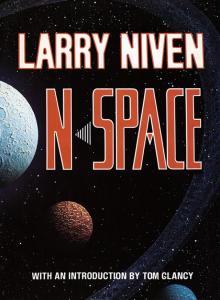 N-Space
N-Space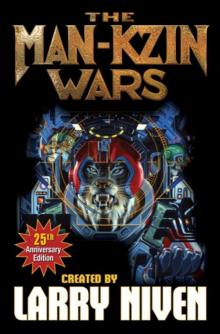 Man-Kzin Wars 25th Anniversary Edition
Man-Kzin Wars 25th Anniversary Edition The Ringworld Engineers
The Ringworld Engineers Larry Niven’s Man-Kzin Wars - XII
Larry Niven’s Man-Kzin Wars - XII The Magic May Return
The Magic May Return Tales of Known Space: The Universe of Larry Niven
Tales of Known Space: The Universe of Larry Niven The Magic Goes Away
The Magic Goes Away Larry Niven’s Man-Kzin Wars - III
Larry Niven’s Man-Kzin Wars - III Larry Niven’s Man-Kzin Wars - VI
Larry Niven’s Man-Kzin Wars - VI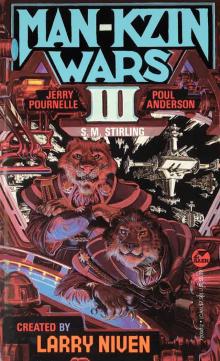 Man-Kzin Wars III
Man-Kzin Wars III Larry Niven’s Man-Kzin Wars - XI
Larry Niven’s Man-Kzin Wars - XI Inferno
Inferno 01-Human Space
01-Human Space Larry Niven’s Man-Kzin Wars - XIV
Larry Niven’s Man-Kzin Wars - XIV The Long Arm of Gil Hamilton
The Long Arm of Gil Hamilton Ringworld's Children
Ringworld's Children Man-Kzin Wars XII
Man-Kzin Wars XII Scatterbrain
Scatterbrain Man-Kzin Wars 9
Man-Kzin Wars 9 Man-Kzin Wars XIII
Man-Kzin Wars XIII Flatlander
Flatlander Man-Kzin Wars V
Man-Kzin Wars V Destiny's Forge
Destiny's Forge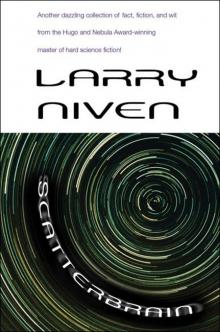 Scatterbrain (2003) SSC
Scatterbrain (2003) SSC The Time of the Warlock
The Time of the Warlock Choosing Names: Man-Kzin Wars VIII
Choosing Names: Man-Kzin Wars VIII Larry Niven's Man-Kzin Wars II
Larry Niven's Man-Kzin Wars II Man-Kzin Wars IX (Man-Kzin Wars Series Book 9)
Man-Kzin Wars IX (Man-Kzin Wars Series Book 9) Choosing Names: Man-Kzin Wars VIII (Man-Kzin Wars Series Book 8)
Choosing Names: Man-Kzin Wars VIII (Man-Kzin Wars Series Book 8) Treasure Planet - eARC
Treasure Planet - eARC The Draco Tavern
The Draco Tavern Larry Niven’s Man-Kzin Wars - The Houses of the Kzinti
Larry Niven’s Man-Kzin Wars - The Houses of the Kzinti The Fourth Profession
The Fourth Profession Betrayer of Worlds
Betrayer of Worlds Convergent Series
Convergent Series Starborn and Godsons
Starborn and Godsons Protector
Protector Larry Niven’s Man-Kzin Wars - IV
Larry Niven’s Man-Kzin Wars - IV Man-Kzin Wars IV (Man-Kzin Wars Series Book 4)
Man-Kzin Wars IV (Man-Kzin Wars Series Book 4) The Legacy of Heorot
The Legacy of Heorot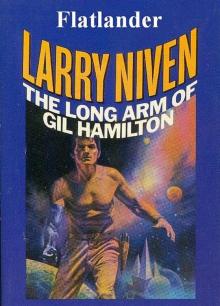 03-Flatlander
03-Flatlander Larry Niven’s Man-Kzin Wars - XIII
Larry Niven’s Man-Kzin Wars - XIII Destiny's Road
Destiny's Road Fate of Worlds
Fate of Worlds Beowulf's Children
Beowulf's Children 04-Protector
04-Protector The Flight of the Horse
The Flight of the Horse Man-Kzin Wars IV
Man-Kzin Wars IV The Moon Maze Game dp-4
The Moon Maze Game dp-4 The California Voodoo Game dp-3
The California Voodoo Game dp-3 07-Beowulf Shaeffer
07-Beowulf Shaeffer Ringworld's Children r-4
Ringworld's Children r-4 The Man-Kzin Wars 05
The Man-Kzin Wars 05 The Man-Kzin Wars 12
The Man-Kzin Wars 12 Lucifer's Hammer
Lucifer's Hammer The Seascape Tattoo
The Seascape Tattoo The Moon Maze Game
The Moon Maze Game Man-Kzin Wars IX
Man-Kzin Wars IX All The Myriad Ways
All The Myriad Ways More Magic
More Magic 02-World of Ptavvs
02-World of Ptavvs ARM
ARM The Ringworld Engineers (ringworld)
The Ringworld Engineers (ringworld) Burning Tower
Burning Tower The Man-Kzin Wars 06
The Man-Kzin Wars 06 The Man-Kzin Wars 03
The Man-Kzin Wars 03 Man-Kzin Wars XIII-ARC
Man-Kzin Wars XIII-ARC The Hole Man
The Hole Man The Warriors mw-1
The Warriors mw-1 The Houses of the Kzinti
The Houses of the Kzinti The Man-Kzin Wars 07
The Man-Kzin Wars 07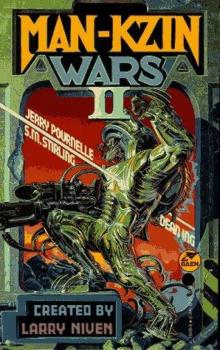 The Man-Kzin Wars 02
The Man-Kzin Wars 02 The Burning City
The Burning City At the Core
At the Core The Trellis
The Trellis The Man-Kzin Wars 01 mw-1
The Man-Kzin Wars 01 mw-1 The Man-Kzin Wars 04
The Man-Kzin Wars 04 The Man-Kzin Wars 08 - Choosing Names
The Man-Kzin Wars 08 - Choosing Names Dream Park
Dream Park How the Heroes Die
How the Heroes Die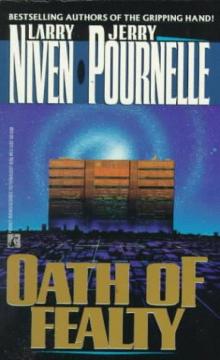 Oath of Fealty
Oath of Fealty The Smoke Ring t-2
The Smoke Ring t-2 06-Known Space
06-Known Space Destiny's Road h-3
Destiny's Road h-3 Flash crowd
Flash crowd The Man-Kzin Wars 11
The Man-Kzin Wars 11 The Best of Galaxy’s Edge 2013-2014
The Best of Galaxy’s Edge 2013-2014 The Ringworld Throne r-3
The Ringworld Throne r-3 A Kind of Murder
A Kind of Murder The Barsoom Project dp-2
The Barsoom Project dp-2 Building Harlequin’s Moon
Building Harlequin’s Moon The Gripping Hand
The Gripping Hand The Leagacy of Heorot
The Leagacy of Heorot Red Tide
Red Tide Choosing Names mw-8
Choosing Names mw-8 Inconstant Moon
Inconstant Moon The Man-Kzin Wars 10 - The Wunder War
The Man-Kzin Wars 10 - The Wunder War Fate of Worlds: Return From the Ringworld
Fate of Worlds: Return From the Ringworld Ringworld r-1
Ringworld r-1 05-A Gift From Earth
05-A Gift From Earth The Integral Trees t-1
The Integral Trees t-1 Footfall
Footfall The Mote In God's Eye
The Mote In God's Eye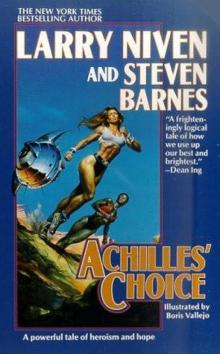 Achilles choice
Achilles choice The Man-Kzin Wars 01
The Man-Kzin Wars 01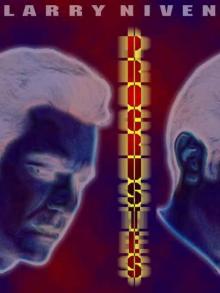 Procrustes
Procrustes The Man-Kzin Wars 03 mw-3
The Man-Kzin Wars 03 mw-3 The Goliath Stone
The Goliath Stone The Man-Kzin Wars 09
The Man-Kzin Wars 09